As we get closer to a technological revolution, it is fascinating to see how the top 10 emerging technologies of 2024 are transforming our world. These advancements, which cover everything from artificial intelligence to space exploration technology, have the power to transform entire industries and improve our daily lives. This extensive blog post will go over these top 10 emerging technologies in detail, including their uses and real-world success stories.
The Potential of Artificial Intelligence (AI)
AI in Medicine: Particularly for Life-Saving
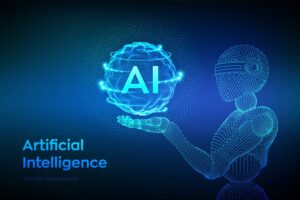
Artificial intelligence (AI) is improving personalized care and diagnosis accuracy, which is revolutionizing the healthcare sector. Accurate and timely patient diagnosis is made possible by AI-powered technologies such as IBM Watson. For example, Watson’s AI can analyze medical images and identify anomalies, significantly improving the likelihood of early cancer detection.
Success Story: Predictive Analytics with AI
Thanks to AI’s use in predictive analytics, companies will be able to predict consumer behavior and market trends by 2024. For instance, Netflix uses AI algorithms to suggest content to users, greatly boosting user retention and engagement. Businesses can improve their decision-making procedures and maintain an advantage over rivals by utilizing AI.
Quantum Computing: The Future Frontier
Understanding Quantum Supremacy
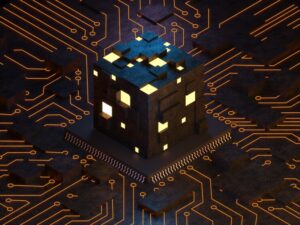
Quantum computing, a technology that harnesses the principles of quantum mechanics, is poised to solve complex problems that are beyond the capabilities of classical computers. In 2024, industry giants like Google and IBM, known for their innovative approaches, are making strides toward achieving quantum supremacy, where quantum computers outperform traditional ones in specific tasks.
Quantum Computing in Financial Services
One notable application of quantum computing is in financial services. Financial institutions are using quantum algorithms to optimize portfolios, manage risks, and detect fraudulent activities. For example, JPMorgan Chase is exploring quantum computing to enhance its trading strategies, potentially saving billions of dollars.
The Evolution of 5G and 6G Networks
The leap from 5G to 6G

Researchers are already preparing for 6G technology, while 5G is still being implemented worldwide. The next generation of wireless technology promises even faster speeds, lower latency, and more reliable connections, enabling advanced applications like holographic communication and immersive virtual experiences.
Real-World Impact: Smart Cities
5G and 6G networks play a crucial role in advancing the development of smart cities. These networks support a vast array of connected devices, from traffic sensors to energy-efficient lighting systems. In Barcelona, the implementation of 5G technology has improved traffic management and reduced energy consumption, showcasing the potential of these networks in urban environments.
Augmented Reality (AR) and Virtual Reality (VR): Immersive Experiences
Revolutionizing Education through AR and VR

Augmented reality (AR) and virtual reality (VR) are revolutionizing education by creating immersive learning experiences. Students can now explore historical sites or conduct virtual science experiments from the comfort of their classrooms. Companies like Google and Microsoft are developing AR and VR tools that make learning more engaging and interactive.
Success Story: VR in Healthcare Training
In the healthcare sector, VR is being used to train medical professionals. Surgeons can practice complex procedures in a risk-free virtual environment, enhancing their skills and reducing the likelihood of errors. Check out how Osso VR, a virtual reality platform, is revolutionizing surgical training outcomes in multiple medical institutions.
Blockchain Technology: Beyond Cryptocurrencies
Securing Supply Chains with Blockchain
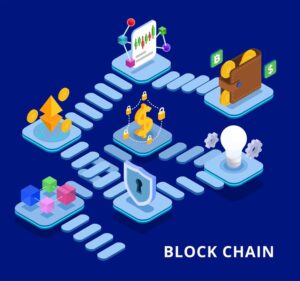
Blockchain technology, known for powering cryptocurrencies like Bitcoin, is finding applications beyond finance. In 2024, blockchain will be used to secure supply chains, ensuring transparency and traceability. Companies like IBM are leveraging blockchain to track the journey of goods from manufacturers to consumers, reducing fraud and improving efficiency.
Success Story: Blockchain in Healthcare
Blockchain’s potential in healthcare is immense. It can securely store patient records, ensuring data integrity and privacy. The startup Medicalchain uses blockchain to create a secure, decentralized database for medical records, allowing patients to control access to their data and improving the overall efficiency of the healthcare system.
Biotechnology Advances: Revolutionizing Medicine
Gene Editing and CRISPR

Biotechnology advances, particularly in gene editing, are opening new frontiers in medicine. CRISPR technology allows scientists to modify DNA, offering precise potential cures for genetic disorders. In 2024, researchers will make significant progress in using CRISPR to treat conditions like sickle cell anemia and muscular dystrophy.
Success Story: Personalized Medicine
Personalized medicine, powered by biotechnology, tailors treatments to individual patients based on their genetic makeup. Companies like 23andMe are providing genetic testing services that help individuals understand their health risks and make informed decisions about their healthcare. This approach is revolutionizing how we prevent and treat diseases.
The Internet of Things (IoT): A Connected World
Smart Homes and IoT Devices
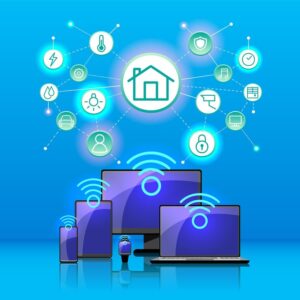
The Internet of Things (IoT) connects everyday objects to the Internet, enabling them to collect and exchange data. Smart homes equipped with IoT devices, such as thermostats and security cameras, are not just about convenience; they’re becoming increasingly common. These devices offer convenience and energy efficiency, making our lives more comfortable and sustainable.
Industrial Internet of Things: Increasing Output
The IoT increases productivity and efficiency in the industrial sector. Factories are using IoT sensors to track the performance of their equipment and predict maintenance needs, which reduces costs and downtime. With its Predix platform, General Electric (GE) helps businesses enhance safety and streamline procedures. GE is a leader in the industrial Internet of Things.
Innovations in renewable energy are driving the future.
Advances in Wind and Solar Power

Innovations in renewable energy are essential to halting global warming. Technological advancements in solar and wind energy sources are increasing their efficiency and cost. By 2024, companies such as Tesla and Siemens will have developed innovative solar and wind energy systems with reduced costs.
Energy Storage Solutions’ Success Story
Energy storage is an essential part of renewable energy systems. A home battery system called Tesla’s Powerwall stores extra solar energy for use at night or on overcast days. This innovation enables homeowners to become energy self-sufficient and reduces reliance on the grid, paving the way for a sustainable energy future.
Autonomous Vehicles: The Future of Transportation
Self-Driving Cars and Beyond
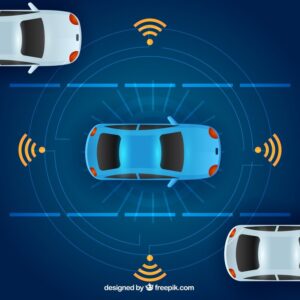
Autonomous vehicles, equipped with advanced sensors and AI, are transforming the transportation industry. They have the potential to decrease vehicular collisions and enhance mobility for the elderly and disabled. Businesses like Waymo and Tesla are in charge of developing and testing autonomous vehicle technologies.
Achievement: Self-Governing Delivery Robots
Autonomous delivery robots, like self-driving automobiles, are becoming increasingly popular. These package-delivery robots’ ability to navigate through cities eliminates the need for human drivers. Several cities have seen Starship Technologies successfully deploy autonomous delivery robots, providing a preview of what lies ahead for last-mile delivery.
Advances in Cybersecurity: Protecting the Digital Age
Comprehensive Threat Identification

Cybersecurity innovations are critical to safeguarding sensitive data and systems as cyber threats become more complex. Artificial intelligence (AI)-driven security solutions and other advanced threat detection technologies are improving our capacity to identify and neutralize cyberattacks. Businesses like Darktrace use AI to spot anomalous activity and instantly neutralize threats.
Success Story: Zero Trust Architecture
Zero Trust Architecture is a cybersecurity approach that assumes no user or device is trustworthy by default. This model requires strict identity verification for every access request, minimizing the risk of data breaches. Microsoft has implemented Zero Trust principles in its security framework, significantly improving its resilience against cyber threats.
Edge Computing: Processing Power at the Edge
Reducing Latency with Edge Computing
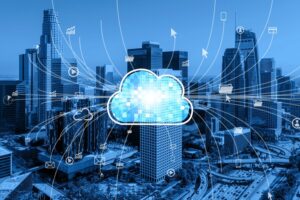
Edge computing brings processing power closer to data sources, reducing latency and bandwidth usage. This technology is essential for applications that require real-time processing, such as autonomous vehicles and industrial automation. Companies like Amazon and Microsoft are developing edge computing solutions to enhance the performance of their services.
Success Story: Smart Grids
Edge computing is crucial to the development of smart grids. By processing data at the edge, smart grids can more efficiently respond to changes in energy demand and supply. For example, Duke Energy is using edge computing to optimize its energy distribution network, improving reliability and reducing costs.
Nanotechnology: Tiny Tech with Big Impact
Medical Applications of Nanotechnology
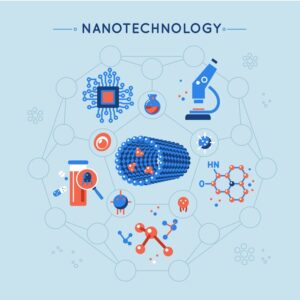
Nanotechnology, the science of manipulating matter at the atomic level, has vast potential in medicine. Researchers are developing nanobots that can deliver drugs directly to cancer cells, minimizing side effects and improving treatment outcomes. In 2024, breakthroughs in nanotechnology are expected to revolutionize drug delivery and diagnostics.
Success Story: Nanomaterials in Electronics
Nanotechnology is also transforming the electronics industry. Nanomaterials like graphene are being used to create smaller, faster, and more efficient electronic components. Samsung, for example, is exploring the use of nanomaterials to develop next-generation displays and batteries, pushing the boundaries of what’s possible in consumer electronics.
Robotics and Automation: Redefining the Workforce
Collaborative Robots (Cobots)
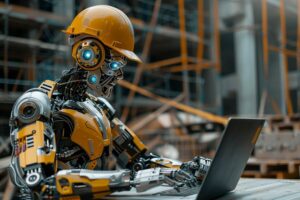
Robotics and automation are redefining the workforce, with collaborative robots (cobots) working alongside humans to enhance productivity. Cobots are designed to perform repetitive tasks, allowing human workers to focus on more complex and creative activities. Companies like Universal Robots are leading the way in developing safe and versatile cobots.
Success Story: Automated Warehouses
In logistics, automation streamlines operations and reduces costs. Amazon’s automated warehouses use robots to pick, pack, and sort products, significantly increasing efficiency. These robots work alongside human employees, demonstrating the potential of robotics to augment human capabilities and transform industries.
Space Exploration Technology: The Final Frontier
Private Companies in Space Exploration
Space exploration technology is advancing rapidly, with private companies like SpaceX and Blue Origin playing a pivotal role. In 2024, these companies are planning missions to the Moon and Mars, aiming to make space travel more accessible and affordable. SpaceX’s Starship, for example, is designed to transport humans to Mars, opening new possibilities for space colonization.
Success Story: Satellite Internet
Another exciting development
Satellite internet is a technology in space. SpaceX’s Starlink project aims to provide global internet coverage using a constellation of low-Earth orbit satellites. This initiative has the potential to bring high-speed Internet to remote and underserved areas, bridging the digital divide and connecting the world like never before.
Conclusion: Embracing the Future of Technology
As we look forward to 2024, the rapid advancements in the top 10 emerging technologies promise to reshape our world in unprecedented ways. From Artificial Intelligence to Space Exploration Technology, these innovations are transforming industries, enhancing our daily lives, and opening new frontiers. By understanding and leveraging these technologies, we can drive innovation, solve complex problems, and build a more connected, efficient, and sustainable future.
As these technologies continue to evolve, staying informed and adaptable will be crucial. Whether you’re a business leader, a tech enthusiast, or simply curious about the future, embracing these top 10 emerging technologies will enable you to stay ahead of the curve and make the most of the opportunities they present.
Frequently Asked Questions (FAQs)
What are the top 10 emerging technologies to watch in 2024?
The top 10 emerging technologies to watch in 2024 include Artificial Intelligence (AI), Quantum Computing, 5G and 6G Networks, Augmented reality (AR) and Virtual Reality (VR), Blockchain Technology, Biotechnology Advances, Internet of Things (IoT), Renewable Energy Innovations, Autonomous Vehicles, and Cybersecurity Developments.
How is AI transforming healthcare?
AI is transforming healthcare by improving diagnostic accuracy, personalizing treatments, and enhancing predictive analytics. AI-powered tools like IBM Watson are helping doctors diagnose diseases more accurately and efficiently.
What is quantum supremacy?
Quantum supremacy is the point at which quantum computers can solve problems that classical computers cannot. This milestone represents a significant leap in computing power and capabilities.
How will 6G networks differ from 5G?
6G networks will offer faster speeds, lower latency, and more reliable connections than 5G. They will enable advanced applications like holographic communication and immersive virtual experiences.
What are some applications of AR and VR in education?
AR and VR are used in education to create immersive learning experiences, such as virtual field trips, interactive science experiments, and engaging history lessons.
How is blockchain technology being used beyond cryptocurrencies?
Beyond cryptocurrencies, blockchain technology is used to secure supply chains, store medical records, and ensure data integrity in various industries.
What are some recent advances in biotechnology?
Recent advances in biotechnology include gene editing with CRISPR, personalized medicine based on genetic testing, and the development of new vaccines and therapies.
How is the IoT transforming smart homes?
The IoT is transforming smart homes by connecting devices like thermostats, security cameras, and appliances to the internet. This allows for remote control, automation, and improved energy efficiency.
What innovations are happening in renewable energy?
Innovations in renewable energy include more efficient solar panels, advanced wind turbines, and improved energy storage solutions like Tesla’s Powerwall.
How are autonomous vehicles changing transportation?
Autonomous vehicles are reducing traffic accidents, improving mobility for the elderly and disabled, and revolutionizing delivery services with self-driving cars and autonomous delivery robots.
What are the latest developments in cybersecurity?
The latest developments in cybersecurity include advanced threat detection using AI, Zero Trust Architecture, and enhanced encryption methods to protect data and systems from cyberattacks.
How does edge computing improve processing power?
Edge computing improves processing power by bringing data processing closer to the source, reducing latency, and decreasing bandwidth usage, which is essential for real-time applications.
What are some medical applications of nanotechnology?
Medical applications of nanotechnology include targeted drug delivery using nanobots, advanced diagnostic techniques, and the development of new materials for medical implants.
How are robotics and automation redefining the workforce?
Robotics and automation are redefining the workforce by performing repetitive tasks, enhancing productivity, and allowing human workers to focus on more complex and creative activities.
What role are private companies playing in space exploration?
Private companies like SpaceX and Blue Origin are playing a significant role in space exploration by developing technologies for missions to the Moon, Mars, and beyond, making space travel more accessible and affordable.
How is satellite internet changing connectivity?
Satellite internet, like SpaceX’s Starlink, is providing high-speed internet to remote and underserved areas, bridging the digital divide and connecting the world more effectively.
What is the significance of personalized medicine?
Personalized medicine tailors treatments to individual patients based on their genetic makeup, leading to more effective and targeted therapies with fewer side effects.
How are smart grids benefiting from edge computing?
Smart grids benefit from edge computing by processing data locally, which allows for real-time responses to changes in energy demand and supply, improving efficiency and reliability.
What are the potential benefits of 5G and 6G networks for smart cities?
5G and 6G networks can enhance smart cities by supporting a wide range of connected devices, improving traffic management, energy efficiency, and public safety through real-time data analysis.
How can businesses leverage emerging technologies to achieve success?
Businesses can leverage these top 10 emerging technologies by adopting AI for predictive analytics, implementing blockchain for secure transactions, using IoT devices for operational efficiency, and staying informed about the latest advancements to remain competitive and innovative.
 Touch Blog
Touch Blog
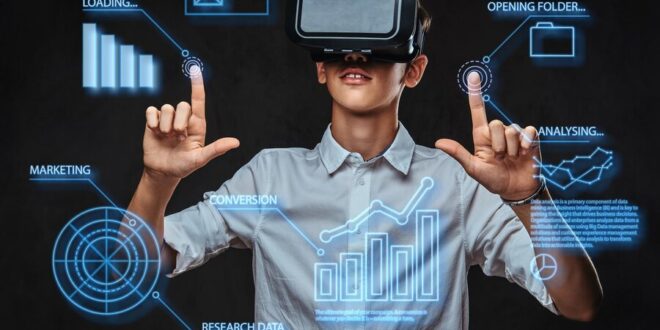
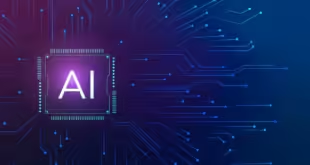
One comment
Pingback: Artificial Intelligence: 10 Revolutionary Evolutions of AI.